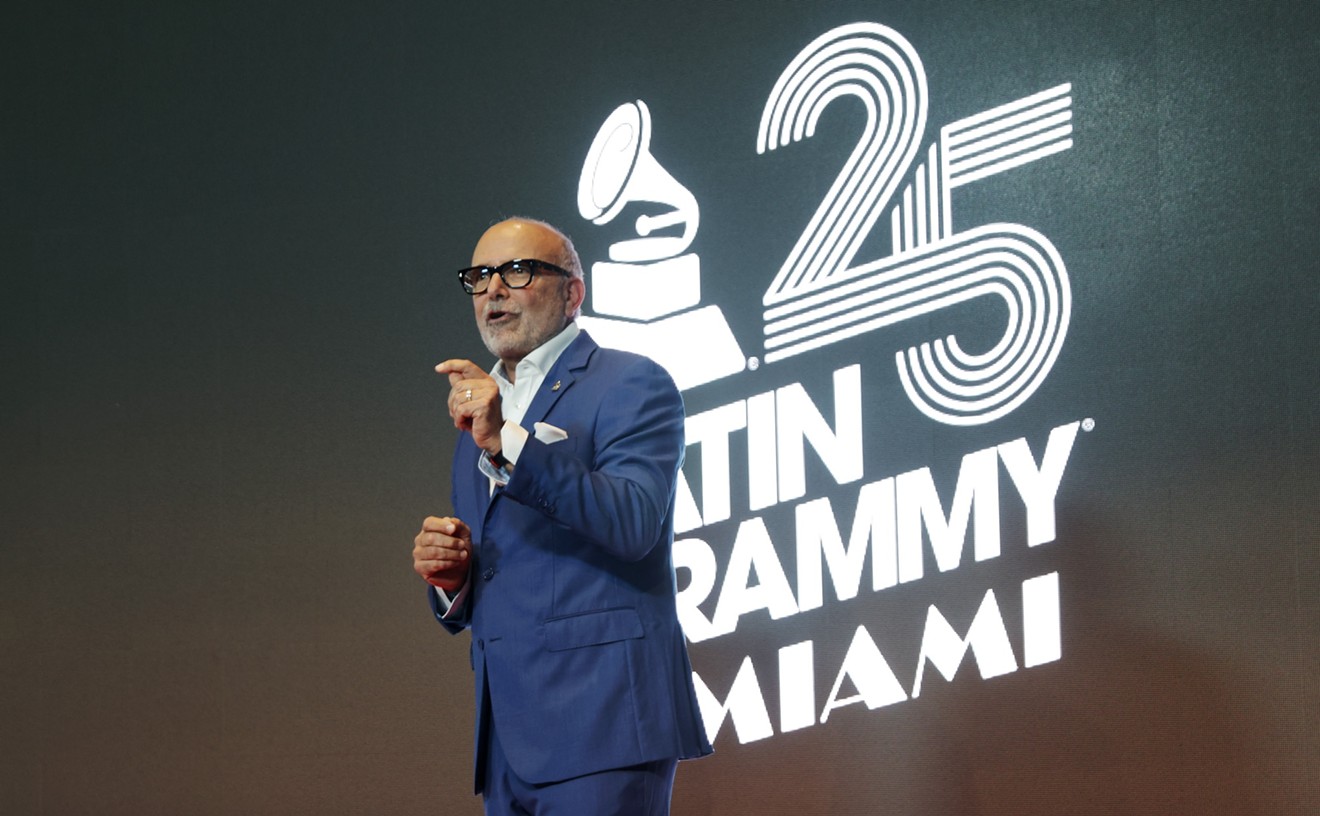"The best movies to watch are Bible movies," he says. "Because they are good stories, and I know they are true. That truth content is important." Don't worry, the man who once advised fellas to "Treat Her Like a Prostitute" isn't starting a new turn as a Bible thumper. It's more about form -- he watches everything from black-and-white films ("I love AMC," he confesses) to adventure flicks, not for the action, sex, and thrills, but for the narrative, he says. Which fits: Consider the title of his 1999 release, The Art of Storytelling. And even nonhip-hop heads recognize his "Children's Story" (from his classic 1988 album The Great Adventures of Slick Rick), a fast-paced parable of a young kid who followed the "wrong path" and ended up killed by cops. Beginning, middle, and end -- that's what holds his attention.
"But unfortunately that is something that isn't being tapped into right now," he says. "For me I guess that the thing I listen for in a record is a refreshing topic, or something that appeals to the public in a refreshing manner. There isn't a lot of that around right now. You have some artists that tell a story on one or two tracks on their album, but none that are making their entire reputation on it."
True, but then again Rick doesn't have to worry about his rep too much -- it's been etched in hip-hop's concrete roots for years. Even if he had never released any solo material, he still would have been a part of rap royalty, thanks to his work with equally royal Doug E. Fresh, on classic songs like "The Show" and "La-Di-Da-Di." And movie jones aside, he has lived enough drama outside the studio to have banked material for a long time. In 1991 he was convicted of attempted murder for shooting at his cousin (who Rick claims was extorting money from him). After his sentence Rick was threatened with deportation (a native of London, he had been living in the United States since the age of twelve) before finally being released for good in 1996.
But a lot of other rappers, he feels, aren't even drawing on their own intense experiences; they're just toeing the corporate rap line. "I think people just feel they have to stick with the format of what's selling," he says. "So they come up with the same stuff -- “My car is bigger than yours, I got more money, my ring is shinier.'"
Rick's baller-scolding rings true until the subject of his attire comes up. Look at pictures of him from back in the day and he's decked out in gold rope chains (an estimated $60,000 worth), Rose Bowl-sized rings, and expensive furs.
Okay, but look at it this way, he says. When he was starting out rap artists dressed in the culture of the street -- his stage clothes were just amplified versions of the kind of fashion everyone was wearing. Everybody wore rope chains, gold rings. Nowadays hip-hop fashion is increasingly exclusionary, represented by clothes and items that many of the core listenership and fan base can't possibly afford. "I guess my bling bling is a little different," he chuckles. "That is, my uniform, everybody dressed like that, 'cause it was cheaper. Some of the rope chains we wore back then would be like 100 grand now, even more if you do like these kids are doing now and going for platinum."
But still, he says, "if you are an old-school rapper -- I mean been around since like, '86 -- you look like an old man onstage without all of that stuff. That is, unless you have a magnificent body and a hell of a smile."
With the exception of politically minded artists like Dead Prez and the Coup, and sonic innovators like Timbaland, Rick's criticisms of hip-hop hype are fairly on the mark. Being called on thematic shallowness by a narrative master such as Rick is like being labeled a lousy football coach by Don Shula -- you get the distinct impression he knows what he is talking about.
There are some good lyricists around nowadays, he points out, such as Jay-Z and Nas, but more often than not they are content with the same old same old. This same old could be one of the reasons rap sales experienced an industry-leading twenty-percent decline last year and Grammy-winning artists such as OutKast (also on the Beyond 2002 bill) are deemed "alternative" so they won't be considered same old. (OutKast, for its part, isn't crazy about the "alternative" label. "People ask us stuff like, where do you draw the line between keeping it real and being creative," Big Boi said in an earlier interview, "like there's a difference?")
But uninformed observers have always imagined a social dichotomy in hip-hop listeners, between the thuggish keep-it-real inner-city lumpenproles and the supposedly elevated artistic suburban patricians -- ignoring the fact that most rap listeners are neither. "I think what I do is entertain the working class," said Rick. "That's who really appreciates the storytelling method of rap. If you are somebody who works as a mail clerk, or as a telemarketer or something, and you get off work and turn on the radio on the way home, you want to hear something that you can relate to. Something that makes your day a little less stressful, a little easier. That's what I try to do with my raps and my stories. And if I can do that, I'm happy."










